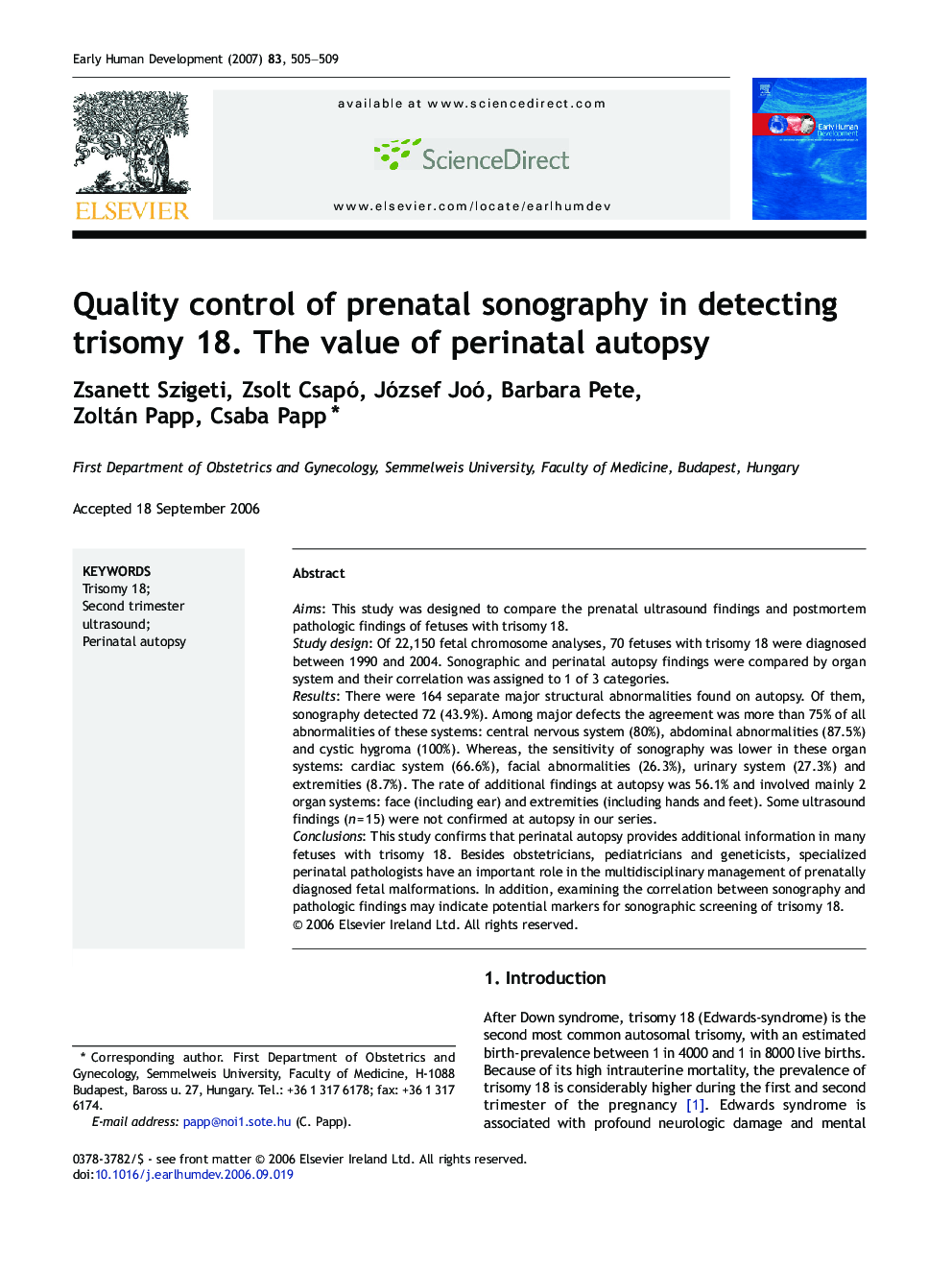| Article ID | Journal | Published Year | Pages | File Type |
|---|---|---|---|---|
| 3918614 | Early Human Development | 2007 | 5 Pages |
AimsThis study was designed to compare the prenatal ultrasound findings and postmortem pathologic findings of fetuses with trisomy 18.Study designOf 22,150 fetal chromosome analyses, 70 fetuses with trisomy 18 were diagnosed between 1990 and 2004. Sonographic and perinatal autopsy findings were compared by organ system and their correlation was assigned to 1 of 3 categories.ResultsThere were 164 separate major structural abnormalities found on autopsy. Of them, sonography detected 72 (43.9%). Among major defects the agreement was more than 75% of all abnormalities of these systems: central nervous system (80%), abdominal abnormalities (87.5%) and cystic hygroma (100%). Whereas, the sensitivity of sonography was lower in these organ systems: cardiac system (66.6%), facial abnormalities (26.3%), urinary system (27.3%) and extremities (8.7%). The rate of additional findings at autopsy was 56.1% and involved mainly 2 organ systems: face (including ear) and extremities (including hands and feet). Some ultrasound findings (n = 15) were not confirmed at autopsy in our series.ConclusionsThis study confirms that perinatal autopsy provides additional information in many fetuses with trisomy 18. Besides obstetricians, pediatricians and geneticists, specialized perinatal pathologists have an important role in the multidisciplinary management of prenatally diagnosed fetal malformations. In addition, examining the correlation between sonography and pathologic findings may indicate potential markers for sonographic screening of trisomy 18.
